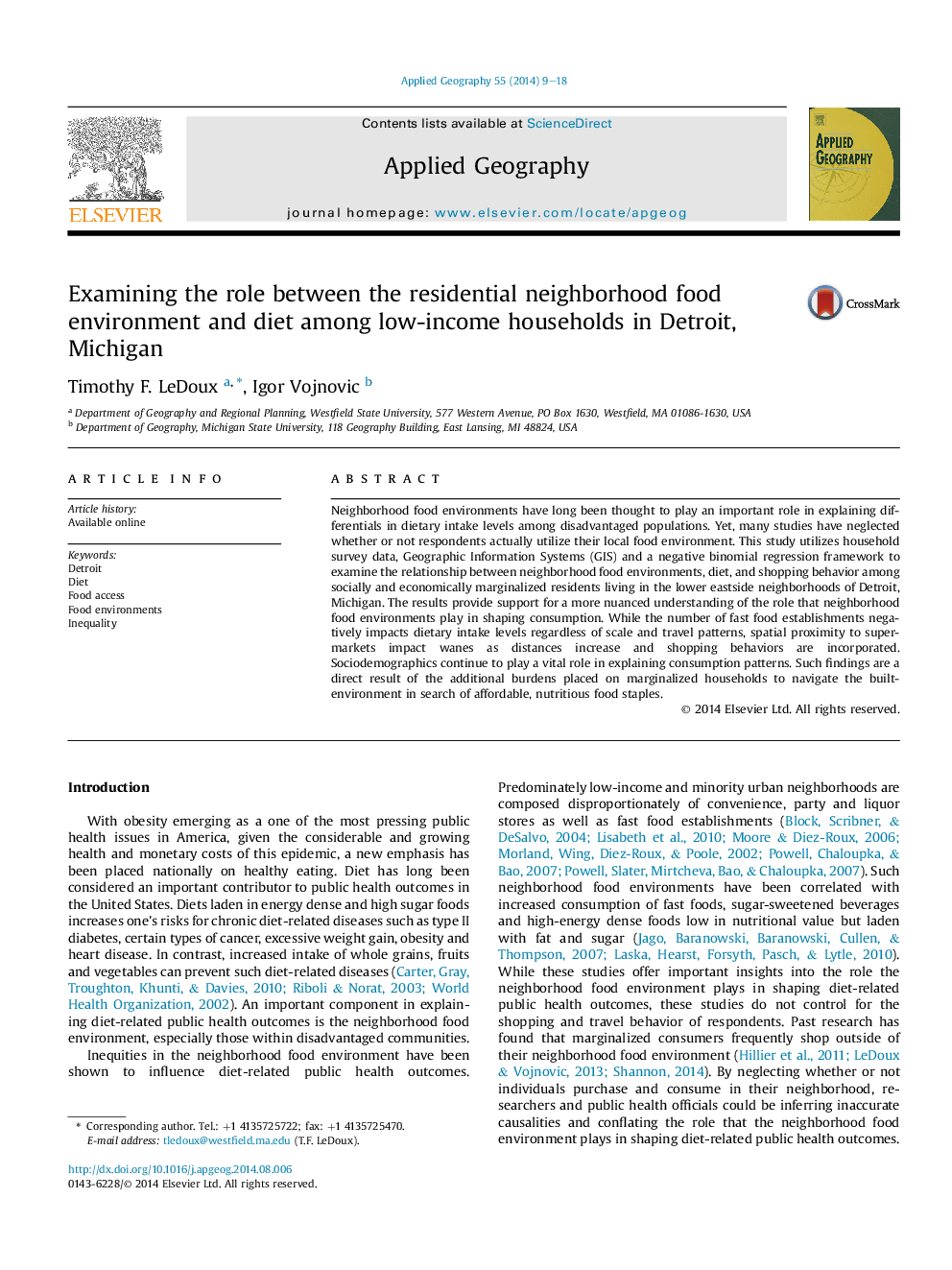| Article ID | Journal | Published Year | Pages | File Type |
|---|---|---|---|---|
| 6538664 | Applied Geography | 2014 | 10 Pages |
Abstract
Neighborhood food environments have long been thought to play an important role in explaining differentials in dietary intake levels among disadvantaged populations. Yet, many studies have neglected whether or not respondents actually utilize their local food environment. This study utilizes household survey data, Geographic Information Systems (GIS) and a negative binomial regression framework to examine the relationship between neighborhood food environments, diet, and shopping behavior among socially and economically marginalized residents living in the lower eastside neighborhoods of Detroit, Michigan. The results provide support for a more nuanced understanding of the role that neighborhood food environments play in shaping consumption. While the number of fast food establishments negatively impacts dietary intake levels regardless of scale and travel patterns, spatial proximity to supermarkets impact wanes as distances increase and shopping behaviors are incorporated. Sociodemographics continue to play a vital role in explaining consumption patterns. Such findings are a direct result of the additional burdens placed on marginalized households to navigate the built-environment in search of affordable, nutritious food staples.
Related Topics
Life Sciences
Agricultural and Biological Sciences
Forestry
Authors
Timothy F. LeDoux, Igor Vojnovic,
